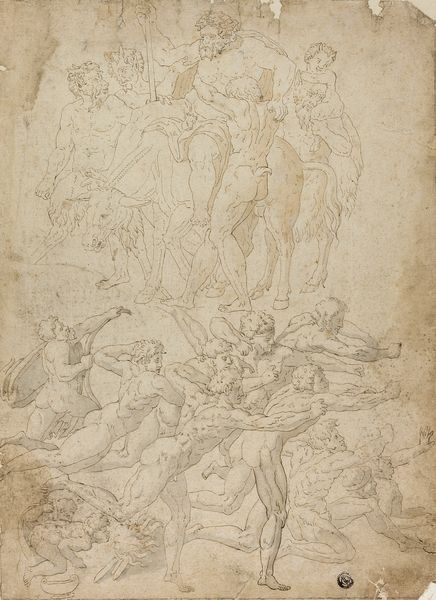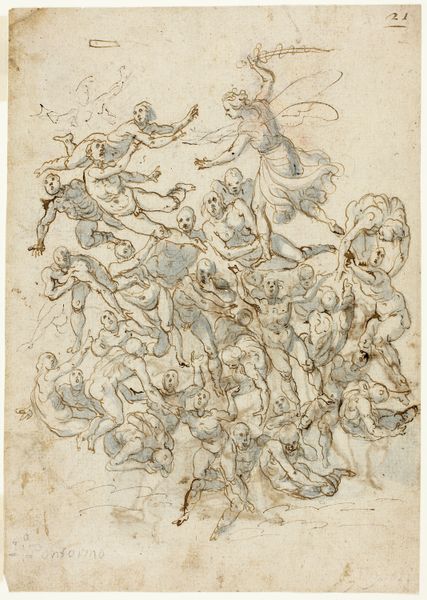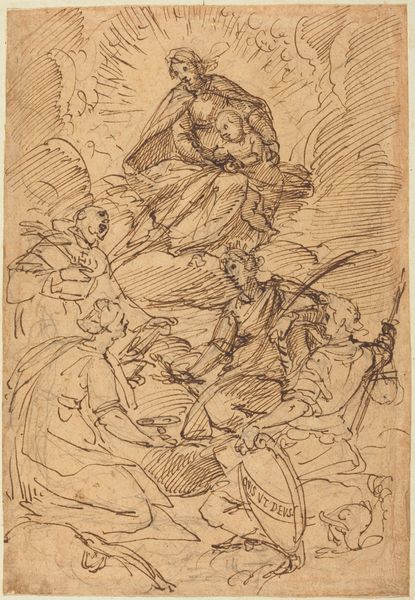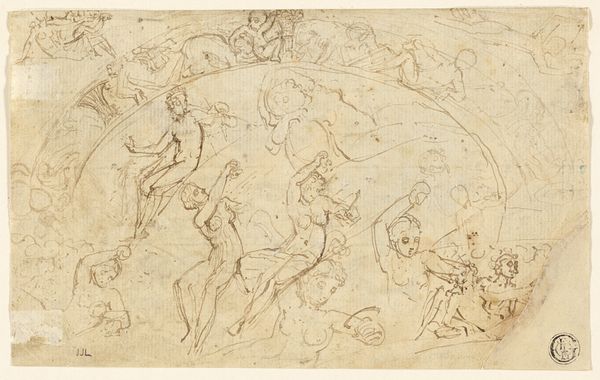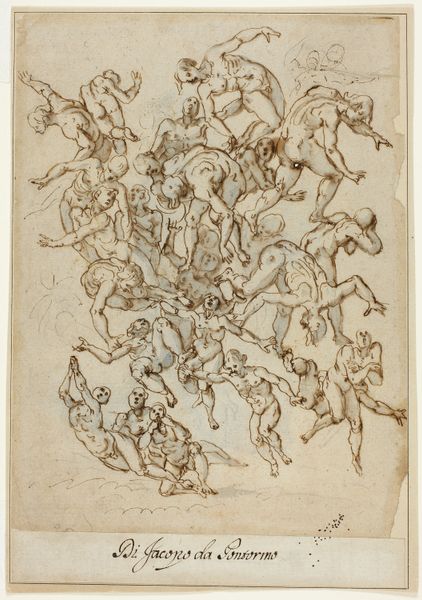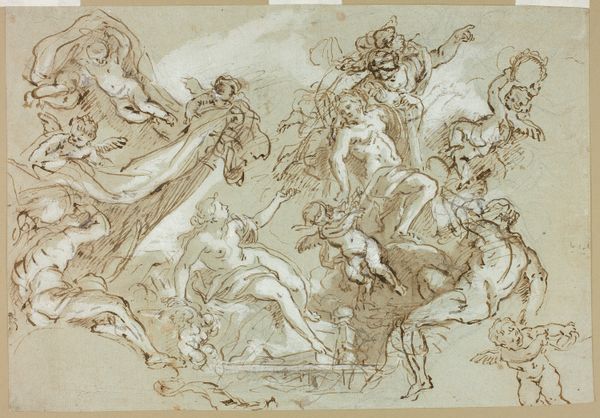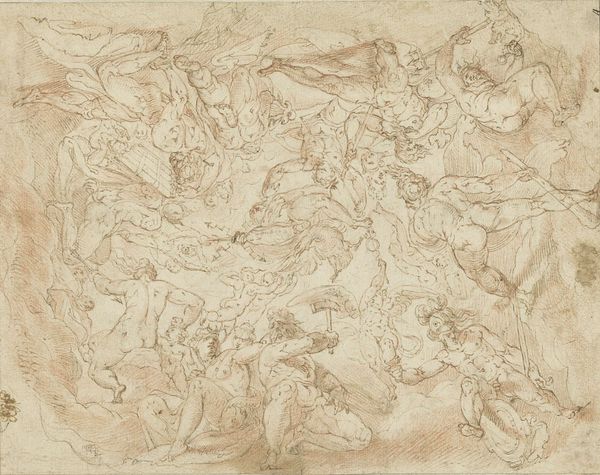
Apollo in his chariot, design for a ceiling painting 1655 - 1726
0:00
0:00
drawing, ink, pen
#
drawing
#
ink drawing
#
allegory
#
baroque
#
pen sketch
#
ink
#
pen
#
history-painting
Dimensions: 556 mm (height) x 425 mm (width) (bladmaal)
Editor: Here we have Alessandro Gherardini's "Apollo in his chariot, design for a ceiling painting," likely created sometime between 1655 and 1726. It’s an ink drawing, quite dynamic despite its relatively small scale. How do you interpret this work, given its context as a ceiling design? Curator: Ah, yes, a fascinating glimpse into the Baroque imagination. I see more than just a mythological scene; I perceive a symbolic drama unfolding. Consider Apollo, the sun god, not merely as a classical figure, but as a representation of enlightenment and reason triumphing over darkness. The chariot itself, with its powerful horses, is a symbol of irresistible force. Editor: So, the dynamic movement contributes to that sense of overwhelming force? Curator: Precisely. Note how the figures are arranged, swirling upwards towards the light. This upward movement, typical of Baroque art, pulls the viewer’s eye towards the heavens. Ask yourself, what emotions does that provoke? Editor: It creates a sense of aspiration, maybe even awe. It also uses all the pictorial space. Are those figures at the bottom meant to represent darkness or ignorance, then? Curator: It’s quite possible. Look at their gestures, their expressions – or lack thereof. They seem weighed down, earthbound. Whereas Apollo and his entourage are radiant, liberated. But also consider the psychological impact of placing such an image on a ceiling. Imagine lying beneath it, looking up. What kind of power dynamic is being established? Editor: I see what you mean. The viewer is positioned as subordinate, almost as if being blessed – or judged. This really adds a whole other dimension! Curator: Indeed. Gherardini isn't simply depicting a myth; he’s constructing a visual language of power, belief, and cultural memory meant to shape perceptions. It's amazing how visual symbolism preserves these cultural narratives over time. Editor: Thank you. Thinking about the cultural and psychological weight it holds really makes it much richer!
Comments
No comments
Be the first to comment and join the conversation on the ultimate creative platform.



